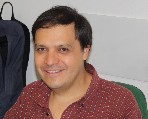Room: Auditorium 1
Date: Monday, 09 June 2025
Time: 13:45 - 14:45 CEST
Session code AP.1
Biomass availability perspectives for bioenergy and bioeconomy
Designing Mixed-Cropping Alternatives for the Production of Suitable Feedstock for SAF
Short Introductive summary
Sustainable biofuels are important energy sources to increase the share of renewable energy in sectors that are difficult to decarbonize such the aviation sector. The design of mixed-cropping systems, as intermediate crops, could facilitate the supply of suitable feedstocks through the integration of food, feed and other biobased products in a sustainable manner by valorizing agricultural residues, increasing biomass yield, enhancing yield stability and sustainability for SAF. The objective of this study was to preliminary understand the biological and productive impacts of mix-cropping legume and oilseed cover crops with biomass sorghum under controlled environmental conditions and PGPR applications. Biomass sorghum (BS), sunn hemp (SH), pigeon pea (PP), and Ethiopian mustard (EM) were grown in pots as monocrops and intercrops (BS × SH, BS x EM, and BS x PP) with or without PGPR. Biomass sorghum performance seems to be directly and positively affected by the application of PGPR when grown in combination with legume species rather than oilseed crops.
Presenter

Walter ZEGADA-LIZARAZU
University of Bologna, Agricultural Science Dpt., ITALY
Presenter's biography
Walter Zegada-Lizarazu has a Ph.D. in Crop Science (Nagoya University, Japan). Associate professor at the Department of Agricultural and Food Sciences of Bologna University. Interests on cropping systems, agronomic and ecophysiological aspects at root/canopy levels and carbon dynamics.
Biographies and Short introductive summaries are supplied directly by presenters and are published here unedited
Co-authors:
E Ferro, University of Bologna, ITALY
E. Pagliarini, University of Bologna, ITALY
F. Gaggia, University of Bologna, ITALY
A. Monti, University of Bologna, ITALY
Session reference: AP.1.3
